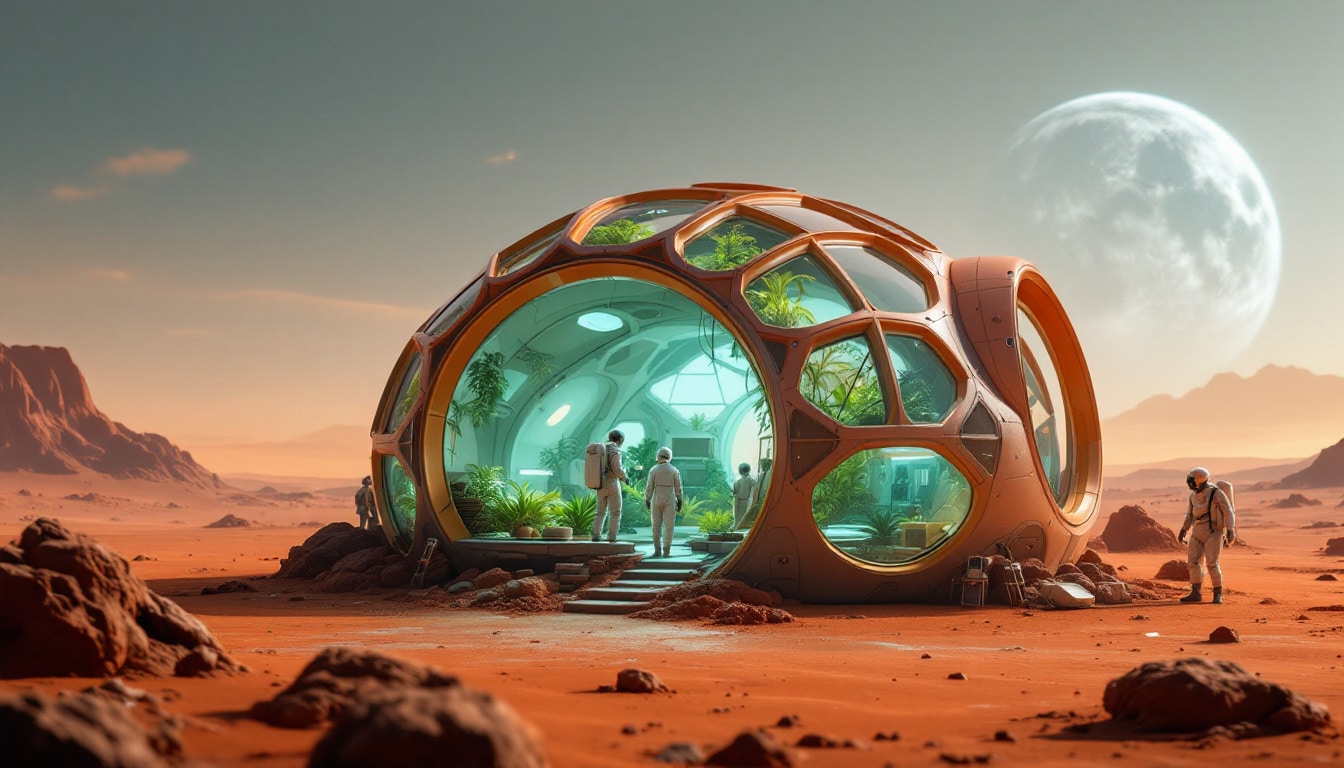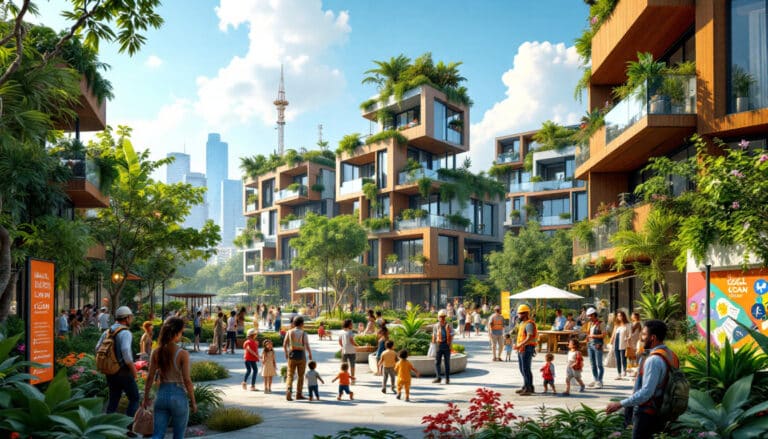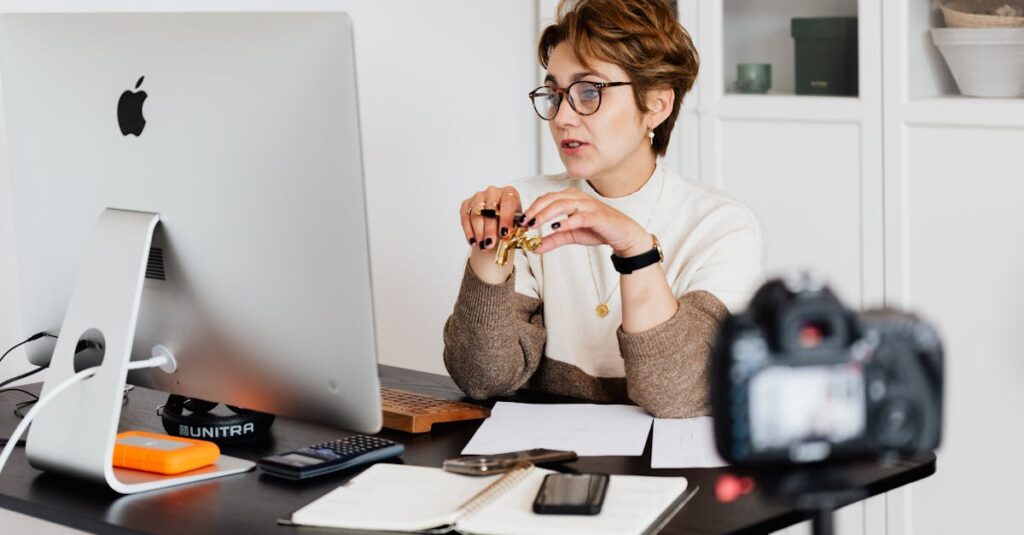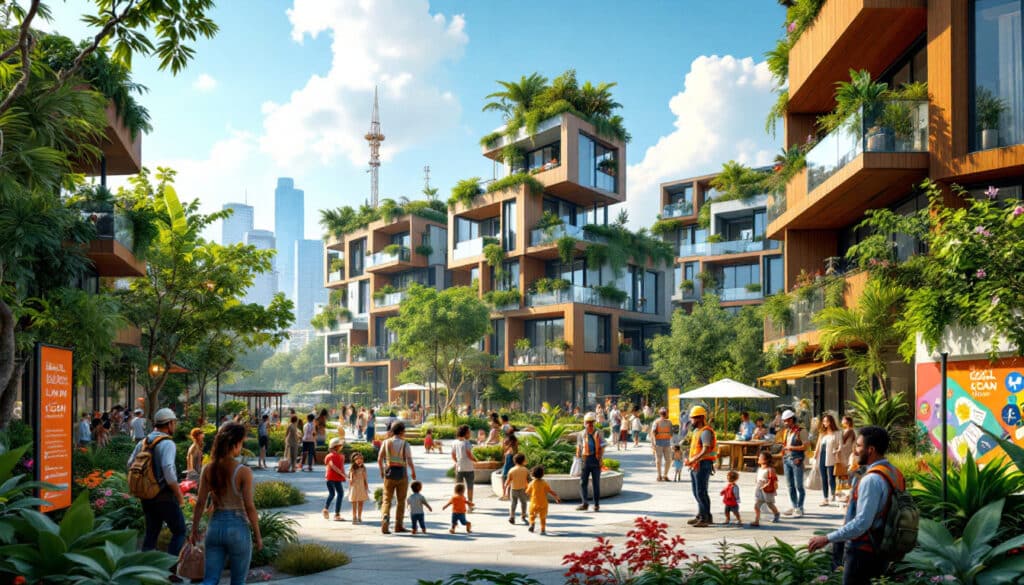Imagine Martian habitats built with the bodily fluids of astronauts, an idea that seems straight out of a science fiction story. This bold proposal could become a reality thanks to innovative research. By integrating materials such as blood, urine, and other biological elements into the construction process, scientists aim to transform our vision of colonizing the red planet. This method, inspired by ancient techniques, raises fascinating questions about the limits of our creativity and the human resources needed to establish sustainable colonies on Mars.
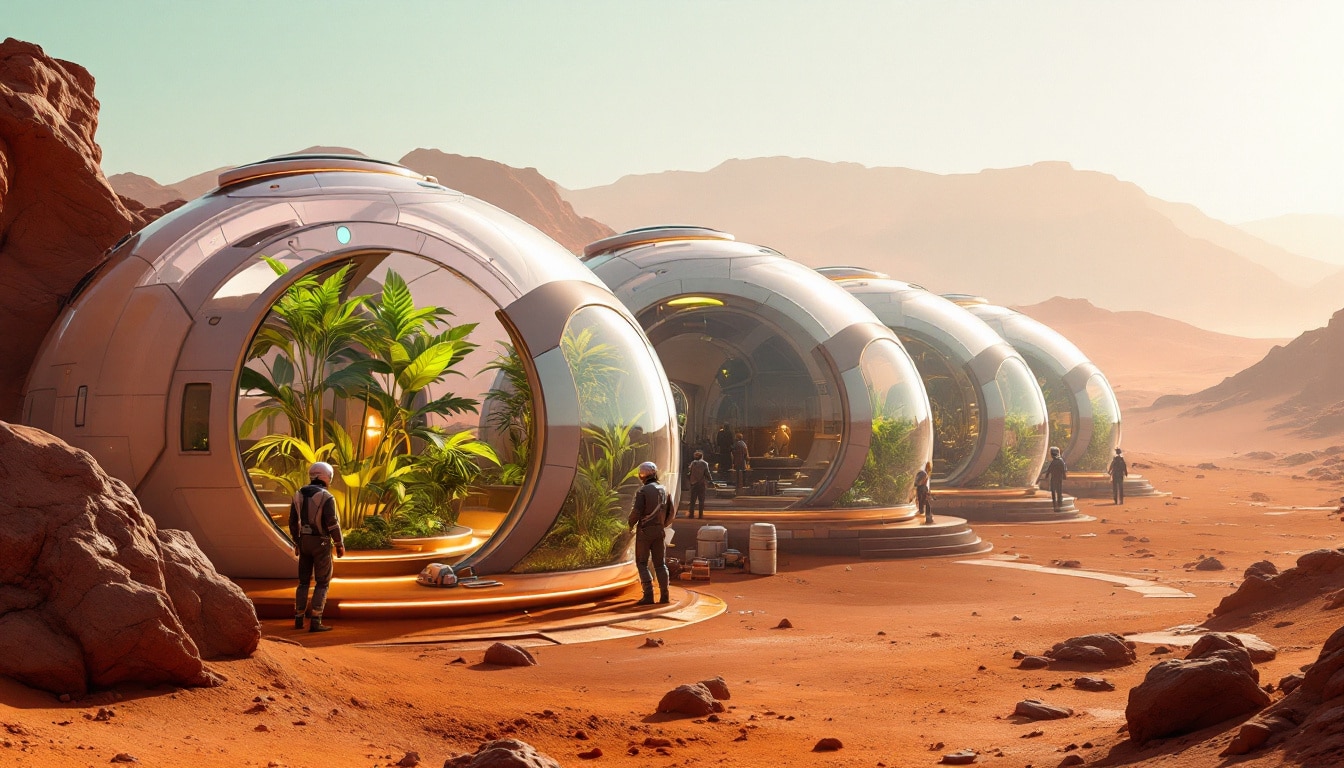
The idea of building habitats on Mars using unexpected materials like blood and urine might seem like a bold science fiction scenario. However, recent research has highlighted this innovative approach that could transform the colonization of the red planet. By exploiting these bodily fluids, scientists envision creating a building material called AstroCrete, by mixing it with elements found on Mars, such as regolith.
Table of Contents
ToggleA revolution in construction materials
This project relies on the idea that astronauts, as future colonists, can provide materials directly during their stay on Mars. Bioengineering and materials chemistry play a role here, offering a unique opportunity to build resilient and sustainable structures. Studies have shown that blood plasma, rich in proteins like serum albumin, could be incorporated into the production of concrete, thus providing enhanced properties of resilience and self-healing. These innovations contribute to envisioning habitats capable of withstanding the rigors of the Martian environment.
Future perspectives and implications
Although this approach may seem extreme, it fits within a desire to develop sustainable solutions for colonizing Mars. The challenges related to establishing a permanent base on the red planet are still numerous, but considering habitats made from biological materials could reduce the logistical burdens and promote the self-sufficiency of the colonies. The applications of these techniques also open pathways towards better design of construction materials on Earth, inspired by research conducted in extraterrestrial environments.

